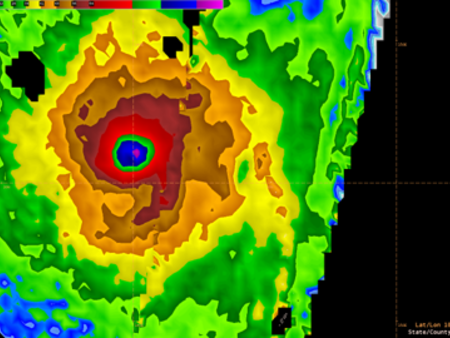Direct Comparison Between Active C-Band Radar and Passive L-Band Radiometer Measurements: Extreme Event Cases
Co-located over extreme events, C-band copolarized and cross-polarized normalized radar cross sections (NRCS) and L-band ocean surface roughness brightness temperature (T B,rough ) are directly compared to analyze the similarities and differences between these two parameters at medium resolution (about 25 km). NRCS in VH-polarization and VV-polarization (σ 0,VH, σ0,VV ) were acquired by Sentinel-1 C-band synthetic aperture radar. T B,rough is estimated from brightness temperatures (T B ) measured by the L-band radiometer on-board the Soil Moisture Active Passive mission. When the rain rate is less than 20 mm/h, a striking linear relationship is found between active C-Band cross-polarized NRCS and passive L-Band T B,rough : σ 0,VH (θ SAR ) ∝ tan(θ SAR ) × T B,rough (θ SMAP = 40°), without any apparent saturation for T B,rough ranging from 3.5 to 17 K. Compared to both high T B,rough and σ 0,VH , copolarized σ 0,VV measurements saturate. As interpreted, this can correspond to a regime change of the air-sea interactions during extreme events. In heavy rain conditions, C-band co-polarized NRCS decreases for extreme situations. In these cases, the covariation between C-band cross-polarized NRCS and L-band T B,rough is less evident. An accurate and unambiguous assessment of the impact of rain will deserve further investigations.
Zhao Yuan, Mouche Alexis, Chapron Bertrand, Reul Nicolas (2018). Direct Comparison Between Active C-Band Radar and Passive L-Band Radiometer Measurements: Extreme Event Cases . Ieee Geoscience And Remote Sensing Letters , 15(6), 897-901 . https://doi.org/10.1109/LGRS.2018.2811712


